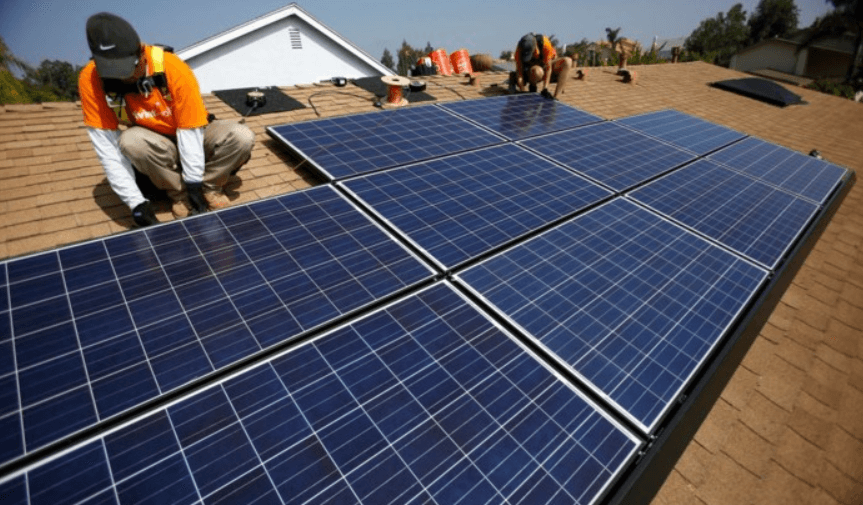Benefits of Installing Solar Panels for Homes and Businesses
1. Lower Energy Costs
A well-designed solar system can significantly cut, or even eliminate, your electricity bill. Over time, the savings can be substantial—especially in states with high electricity rates such as California, New York, and Massachusetts.
2. Environmental Impact
Solar energy is clean, renewable, and emission-free. By switching to solar, you’re reducing your carbon footprint and helping combat climate change.
3. Increased Property Value
Homes equipped with solar panels often sell faster and at higher prices. Buyers appreciate the long-term savings and eco-friendly appeal.
4. Energy Independence
Producing your own power shields you from utility rate hikes and offers more control over your energy consumption.
Understanding the Different Types of Solar Installation Services
When exploring solar installation in the USA, you’ll find multiple options:
-
Residential Installations – Tailored for single-family homes or small multi-family buildings.
-
Commercial Installations – Designed for offices, factories, and retail spaces with higher energy demands.
-
Off-Grid Systems – Ideal for remote locations without access to the utility grid.
-
Grid-Tied Systems – The most common setup, allowing you to draw power from the grid when needed and send excess energy back for credit.
-
Solar with Battery Storage – Offers backup power during outages and better energy usage control.
Factors to Consider When Choosing a Solar Installation Company
Selecting the right solar installer is critical to ensuring your system’s efficiency and longevity. Here’s what to look for:
-
Experience and Certifications – Choose companies with proven track records and credentials such as NABCEP (North American Board of Certified Energy Practitioners) certification.
-
Quality of Equipment – High-efficiency solar panels and durable mounting systems ensure better long-term performance.
-
Warranty and Service – Comprehensive warranties for panels, inverters, and workmanship are essential.
-
Customer Reviews – Online ratings and testimonials can reveal a lot about a company’s reliability.
Cost Comparison – Affordable vs. Premium Solar Installation
Price is often the biggest deciding factor, but it’s not the only one.
Affordable Solar Installation
-
Pros: Lower upfront cost, faster payback period, ideal for budget-conscious households.
-
Cons: May use lower-efficiency panels, shorter warranties, and limited post-installation support.
Premium Solar Installation
-
Pros: Higher-efficiency equipment, longer warranties, advanced monitoring systems, and better aesthetic integration.
-
Cons: Higher initial investment, though offset by better long-term performance.
Key Insight:
If your budget is tight, an affordable installation can still deliver meaningful savings. However, if you can invest more upfront, a premium system typically offers greater efficiency, durability, and overall value over 20+ years.
Step-by-Step Solar Installation Process in the USA
-
Energy Needs Assessment – The installer reviews your electricity usage to determine system size.
-
Site Evaluation & Design – Roof condition, shading, and orientation are analyzed for optimal performance.
-
Permits and Approvals – Installers handle necessary city and utility paperwork.
-
Installation – Panels, inverters, and wiring are professionally mounted.
-
Inspection and Activation – Final checks ensure compliance before the system is connected to the grid.
Maximizing Your Solar Investment
-
Routine Maintenance – Annual inspections and occasional panel cleaning keep your system running efficiently.
-
Technology Upgrades – Adding battery storage or switching to higher-efficiency panels can boost savings.
-
Incentives and Tax Credits – Federal tax credits, state rebates, and net metering programs can significantly reduce payback time.
The Future of Solar Power in the USA
The next decade promises exciting advancements:
-
Ultra-thin, flexible solar panels for easier installation
-
Enhanced battery storage for 24/7 clean power
-
AI-driven energy management for maximum efficiency
Government policies will continue to support renewable energy growth, making solar an increasingly smart investment.
Conclusion – Making the Smart Solar Choice
Switching to solar power is no longer just an eco-conscious decision—it’s a financially sound one. Whether you choose a budget-friendly installation or invest in a premium system, the benefits are undeniable: lower bills, energy independence, and a greener future.
The key is partnering with a trusted solar installation provider that understands your needs, offers high-quality equipment, and stands by their work. With the right choice, you’ll enjoy decades of clean, affordable energy.

